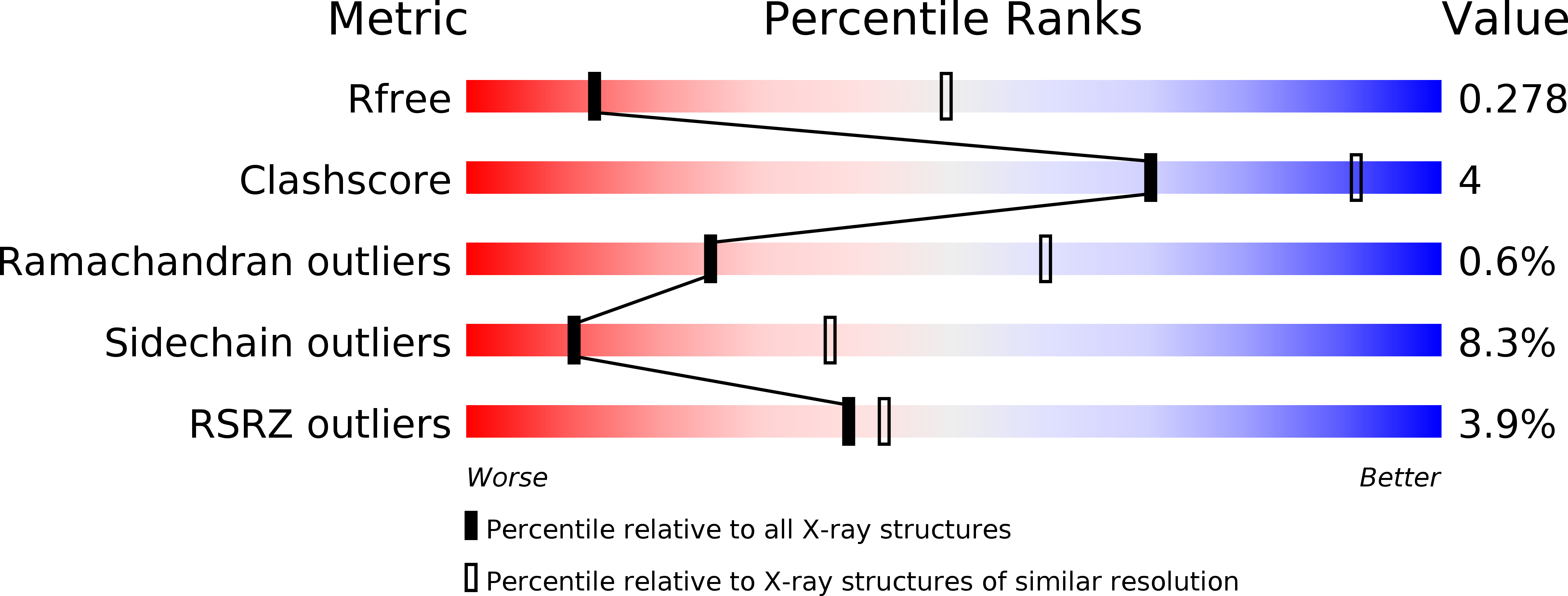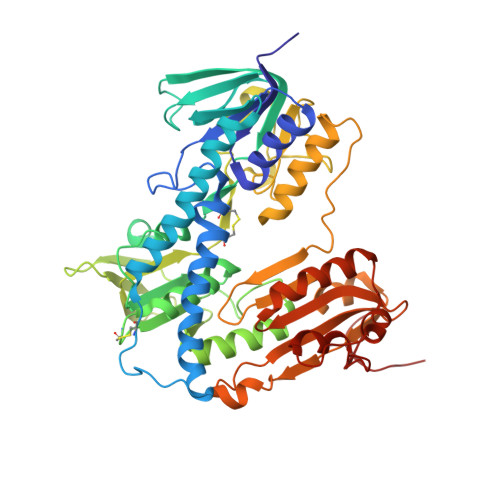Identification and binding mode of a novel Leishmania Trypanothione reductase inhibitor from high throughput screening.
Turcano, L., Torrente, E., Missineo, A., Andreini, M., Gramiccia, M., Di Muccio, T., Genovese, I., Fiorillo, A., Harper, S., Bresciani, A., Colotti, G., Ilari, A.(2018) PLoS Negl Trop Dis 12: e0006969-e0006969
- PubMed: 30475811
- DOI: https://doi.org/10.1371/journal.pntd.0006969
- Primary Citation of Related Structures:
6ER5 - PubMed Abstract:
Trypanothione reductase (TR) is considered to be one of the best targets to find new drugs against Leishmaniasis. This enzyme is fundamental for parasite survival in the host since it reduces trypanothione, a molecule used by the tryparedoxin/tryparedoxin peroxidase system of Leishmania to neutralize hydrogen peroxide produced by host macrophages during infection. In order to identify new lead compounds against Leishmania we developed and validated a new luminescence-based high-throughput screening (HTS) assay that allowed us to screen a library of 120,000 compounds. We identified a novel chemical class of TR inhibitors, able to kill parasites with an IC50 in the low micromolar range. The X-ray crystal structure of TR in complex with a compound from this class (compound 3) allowed the identification of its binding site in a pocket at the entrance of the NADPH binding site. Since the binding site of compound 3 identified by the X-ray structure is unique, and is not present in human homologs such as glutathione reductase (hGR), it represents a new target for drug discovery efforts.
Organizational Affiliation:
IRBM Science Park S.p.A. Via Pontina Km 30,600-00071 Pomezia (RM), Italy.

















